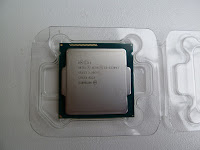We are going to configure the system using the VMware vShere Client 5.5 on a windows machine.
Download VMware vShere Client 5.5
1. Enter the IP address of the ESXi 5 server in a web browser (The IP address is mentioned on the ESXi 5.5 start screen)
2. Click on 'Download vSphere Client' and install it.
Using VMware vShere Client 5.5
1. Start the VMware vSphere Client, enter the IP address of the server, login with username 'root' and the password entered during the installation process.
2. In the security waring screen, put a checkmark to install the certificate and press 'Ignore'.
3. and press 'Yes' to install the certificate
4. The vSphere Client is now started and a message will appear that the evaluation license will expire within 60 days. Press 'OK'.
Enter a free license for ESXi 5.5
1. Login on the VMware site using the credentials you entered when registering and downloading the ESXi 5.5 installer ISO.
2. Copy the key for the component "VMware vSphere Hypervisor 5 License"
3. In the vSphere Client goto the 'Configuration' tab, press 'Licensed Features' under 'Software' and click 'Edit' in the top right corner.
4. Press 'Enter Key', paste the key copied from the VMware site and press 'OK' twice.
5. The free license key is installed.



































